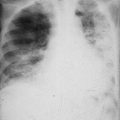and Karl Reinhard Aigner3
(1)
Department of Surgery, The University of Sydney, Mosman, NSW, Australia
(2)
The Royal Prince Alfred and Sydney Hospitals, Mosman, NSW, Australia
(3)
Department of Surgical Oncology, Medias Clinic Surgical Oncology, Burghausen, Germany
In this chapter, you will learn about:
Brain cancers
Clinical features
General features
Focal features
Investigations
Treatment
Secondary cancers in the brain
Nerve cell cancers
18.1 Brain Cancers
Although most brain cancers occur in people over the age of 45, with a peak incidence between 60 and 70 years, in fact the brain is also one of the more common sites for primary cancer in children and young adults. Brain cancers are more common in developed than developing countries (see Appendix), but the reason for this is not known.
There are two groups of cells in the brain that may form tumours. The glial cells (true brain cells) from which most of the malignant tumours develop and the non-glial cells or supporting cells (such as cells of the meninges or cells of the nerve sheaths) from which develop the majority of benign tumours.
Cancers that arise from true brain cells or glial cells are called gliomas. There are a number of different types of gliomas ranging from the more slowly growing types called astrocytoma or oligodendroglioma to more rapidly and highly malignant types called medulloblastoma (usually in children) or glioblastoma multiforme (more often in adults). These different types of glioma tend to occur in different parts of the brain in children and adults. They also have other differences, for example, medulloblastomas are usually highly radiosensitive and are sometimes cured by radiotherapy but other types are less radiosensitive (if at all).
There are no known causes of cerebral tumours. The commonly held belief that electromagnetic fields (including the use of mobile telephones) may play a part has not as yet been substantiated with statistical evidence. However, the possibility remains and anecdotal evidence justifies further study.
18.1.1 Clinical Features (Symptoms and Signs)
Brain cancers tend to cause two types of clinical features:
(a)
General features due to generalised pressure on the brain
(b)
Focal or local features due to pressure or interference by the tumour on parts of the brain or nerves near the tumour
18.1.1.1 General Features
Fitting alone is rarely caused by cancer in children.
The common general features of cancer in the brain are due to pressure and swelling on the brain as a whole. This causes headache, nausea, vomiting and disturbances of vision due to swelling of the optic nerve at the back of the eye (seen as papilloedema). The most significant single feature is persistent headache. Other features may be listlessness, tiredness and mood or personality change. The sufferer may progressively withdraw from social contacts and gradually become confused and stuporous and may lapse into coma. In young children the increased pressure may cause the head to enlarge and hydrocephalus (so-called water on the brain) may develop.
It should be noted that in children, convulsions and fitting are most often caused by a fever or other less serious problem. Fitting alone is rarely caused by cancer in children. In an adult, however, with no previous history of epilepsy, injury or fitting from another known cause, the sudden onset of a fitting attack may be the first sign of a brain tumour.
18.1.1.2 Focal Features
Focal features are due to interference of function of a local region of the brain. These features will depend upon the site of the tumour. In one place it may be interference with speech; in another it may be loss of movement of an arm or leg or elsewhere or loss of sensation in a part of the body. Tumours elsewhere might cause local twitching or focal fitting with different sensations such as olfactory or visual hallucinations like the flickering of lights. There may be disorders of balance, or clumsy movement, or interference with a cranial nerve such as the optic nerves for vision, the nerves that move the eyeball, or the facial nerves that move the muscles of the side of the face. In the frontal lobes, the earliest features might be mood or personality change.
18.1.2 Pathology Types
Astrocytomas can range from relatively low-grade to anaplastic high-grade cancers called glioblastoma multiforme. Low-grade astrocytomas develop more slowly with more prolonged symptoms and a longer life expectancy, but the majority of primary brain cancers, especially in adults, are glioblastoma multiforme with a more rapid onset of headache and other symptoms.
Medulloblastomas are malignant tumours in the cerebellum and are the most common brain cancers in children causing headaches and problems of balance and loss of coordination, possibly with fitting.
18.1.3 Investigations
CT scans and MRI scans have revolutionised investigations for brain tumours. Before these scans were invented, cerebral angiography (arteriography after injecting a radio-opaque iodine compound into one of the internal carotid arteries), radio-isotope scans and air encephalograms (described in Sect. 7.3) were used almost routinely together with a number of other investigations such as the electroencephalogram (EEG), which records brainwave activity. Nowadays, however, the CT scan or the MRI scan usually supplies most of the information of other investigations and even more precisely. Angiography may still give added information particularly concerning the vascularity of a tumour. Surgeons often use angiograms to plan operations. The surgeons then know exactly where the tumour is in relation to nearby blood vessels. The angiograms also indicate which vessels are supplying blood to the tumour.
Stay updated, free articles. Join our Telegram channel

Full access? Get Clinical Tree






